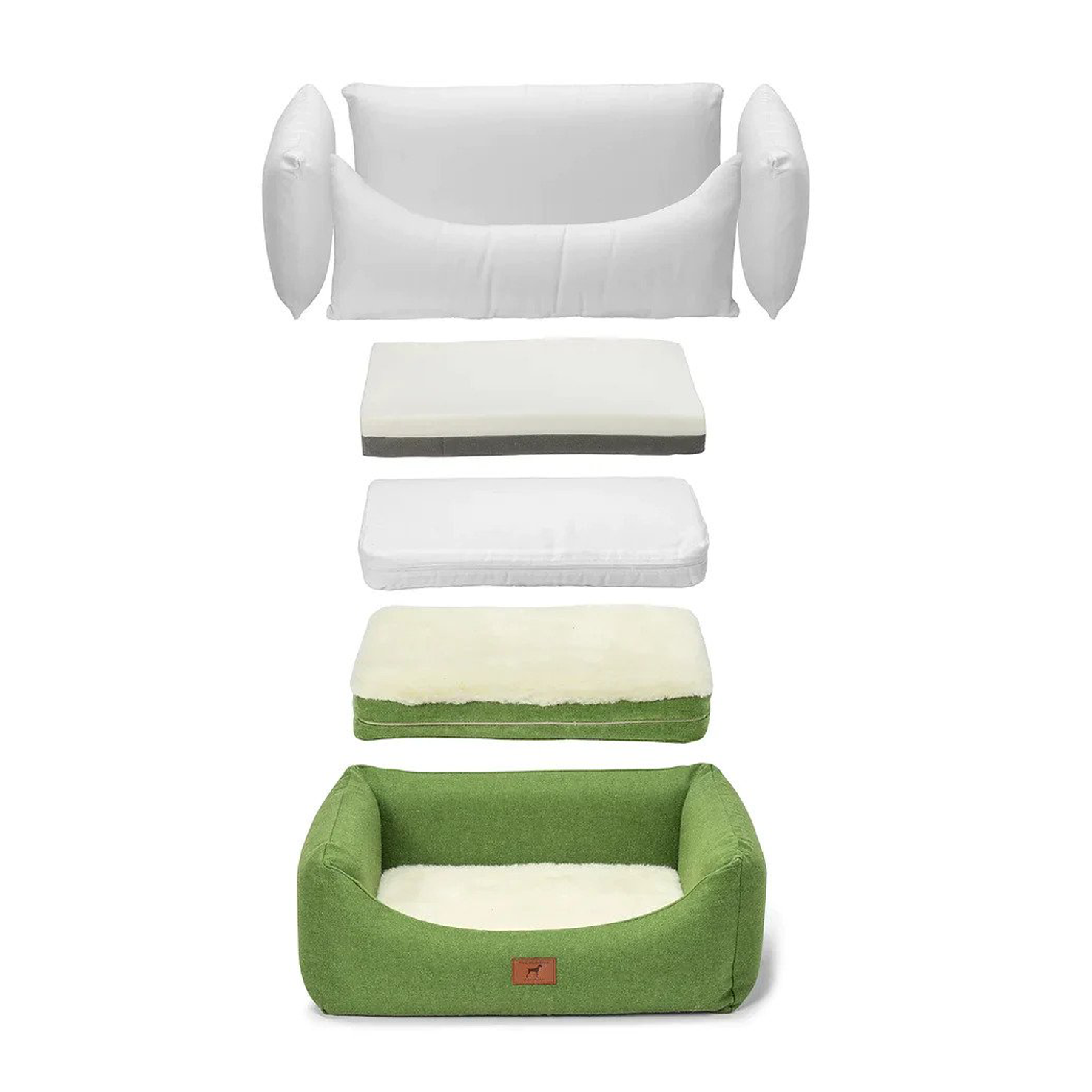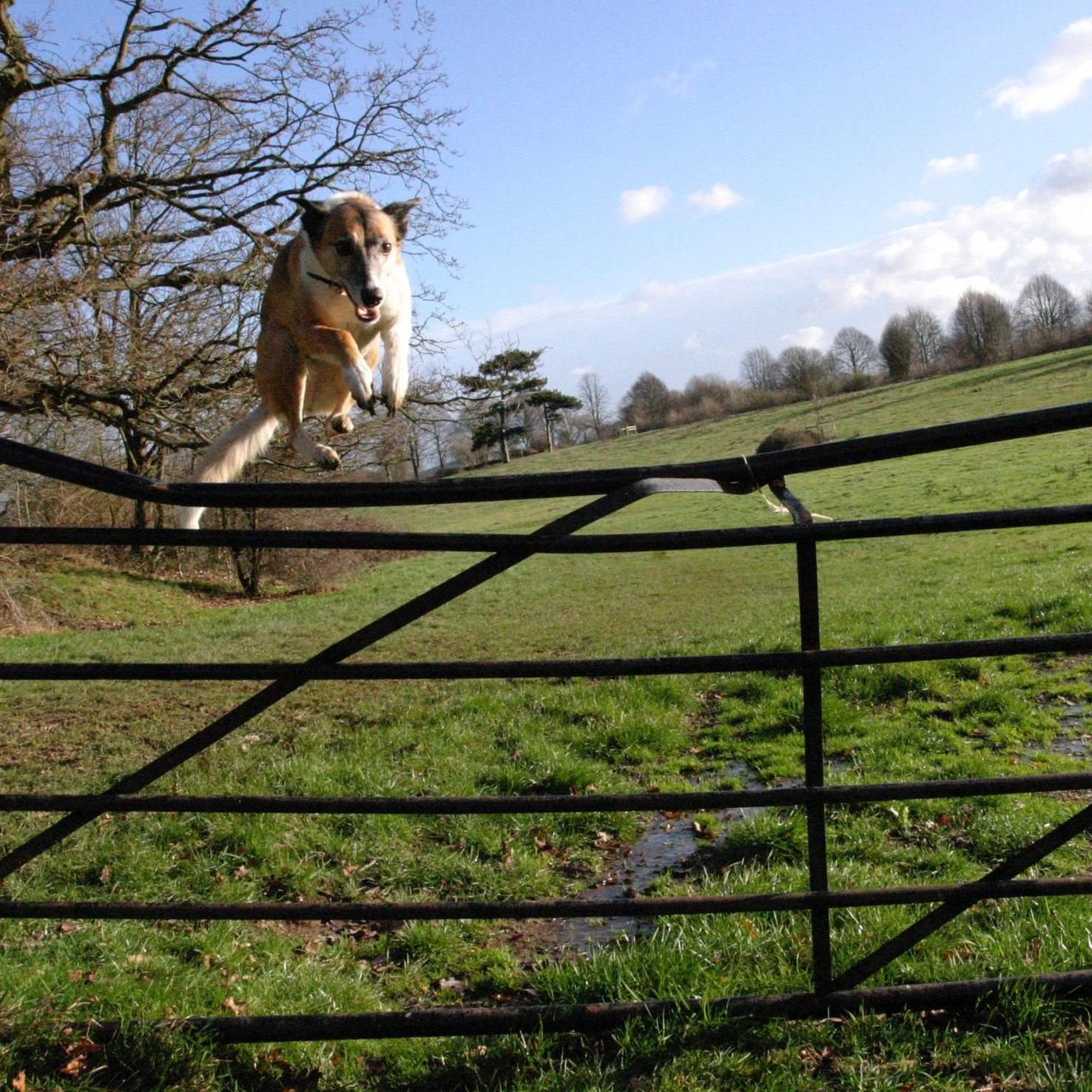Not black and white
20/75 Acuity
Dogs are thought to be near sighted and on average their vision is estimated to be 20/75. This means the image they see of something 20 feet away appears as if it were 75 feet away to a person known to have normal visual acuity (ie 20/20 vision).
The retina is a layer at the back of the inside of the eye that contains specialised cells known as rods and cones. Cones are the light catching cells that respond to colour and allow detailed sight while rods are responsible for vision at low light levels and detect motion. These photosensitive cells trigger nerve impulses that pass via the optic nerve to the brain where the visual image is formed.
Human dog differences
Dogs have only two types of cones in their eyes, compared to our three. This means they are unable to detect reds and greens and instead detect shades of grey. Essentially this results in a colour palate made up of blues and yellows. Where we see red they will see grey/brown, for orange they will see a dark yellow and a light yellow for our yellow, green to them appears grey/yellow , blue appears as light blue and violet as a dark blue. So a bright red ball in the mud would not be obvious based on sight alone to our dogs and a blue or yellow ball will be more easily seen.
A study published in the Proceedings of the Royal Society B suggests that dogs may be able to see in the ultraviolet range- like insects, fish and birds. That would mean they’re able to see things that are completely invisible to us! Further investigation is needed to appreciate how dogs could benefit from this ability but evolutionarily it could have provided hunting advantage in certain specific environments- such as an arctic hare against a snowy background and allow dogs to see urine trails left by prey.
Better night vision
Dogs’ retinae have many more rods than cones and many more rods than we do. Unlike us, dogs have a tapetum lucidum which is a reflective membrane within the eye that redirects light back towards the retina. This potentially gives them superior night vision to ours, although visual acuity will not be good in dim light, some scientists believe it allows them to see in light five times dimmer than we can. In addition, the rod dominated retina should allow for better motion detection. When you stand at a distance from your dog they might not be able to focus on you but if you move around you are more likely to get their attention.
Dogs often have a wider field of vision than us due to their wider set eyes but this will reduce their depth perception as there is less binocular vision.
Trade off
With sight there seems to be a trade off, with eyes that are sensitive in low light conditions being less able to see detail in light. Dogs, having evolved from nocturnal hunters, may have maintained their ability to see in low light conditions and rely more on the other senses of hearing and smell than we do, to get an accurate ‘picture’ of their environment. Dogs can hear a much wider range of frequencies than we can, picking up higher frequency sounds that are inaudible to us. Their noses have about fifty times the olfactory receptors that we have- giving them approximately 300 million. In addition, the portion of their brain associated with smell is forty times greater than ours.
Pup View
More research is needed to further comprehend how dogs see the world and with that knowledge will come enhanced human dog interaction. In the meantime, if you want to make it easier for your dog to pick you out in a crowd, consider wearing blue. For a fun look at how your dog might see the world check out the Pup View smartphone app.
Alison graduated from Cambridge University, in Veterinary medicine and surgery, in 1999. She initially worked in mixed practice before concentrating on domestic animals for the next 16 years. When Alison isn’t working as a vet, she is helping The Red Dog Company make the very best dog beds and accessories available.



